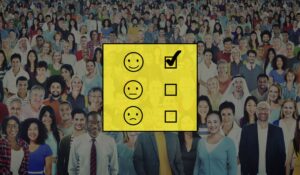Creating employee forms for onboarding is a crucial process for any organization, regardless of its size or industry sector. It ensures that new employees are properly integrated into the company and provided with the necessary resources and information to succeed in their roles. One aspect of effective staff onboarding is the use of employee forms to gather important employee information. In this article, we will explore the benefits of using employee forms templates for onboarding and how they can ensure better efficiency in gathering employee information.
What are Employee Forms?
HR forms are documents used by the Human Resources department to collect and organize employee information. They serve as a standardized template that allows HR professionals to gather necessary data consistently across the organization.
When it comes to managing a company’s workforce, having accurate and up-to-date employee information is crucial. HR forms play a vital role in this process by providing a systematic way to collect and store important data. These forms can range from basic personal information to more specific details such as job history, educational background, and emergency contact information.
How do Employee Forms ensure better efficiency in gathering employee information?
By using HR forms, companies can streamline the process of collecting employee information. Instead of manually gathering data through interviews or emails, HR forms provide a structured approach to gathering the required information. This not only saves time but also ensures that all necessary information is captured accurately.
One of the key benefits of using Employee forms is the consistency they bring to the data collection process.
- By using a standardized template, HR professionals can ensure that they gather the same set of information from every employee.
- This consistency not only makes it easier to compare and analyze data but also helps in maintaining compliance with legal and regulatory requirements.
Moreover, Employee forms can be customized to suit the specific needs of an organization.
- Companies can include additional fields or sections in the forms to gather information that is unique to their industry or business requirements.
- For example, a healthcare organization may include a section in their HR forms to collect medical history or certifications related to patient care.
Another advantage of using Employee forms is that they provide a clear record of employee information.
- By keeping a well-organized database of HR forms, companies can easily access and retrieve employee data whenever needed.
- This can be particularly useful during performance evaluations, promotions, or when responding to legal inquiries.
Furthermore, employee forms can also serve as a valuable tool for data analysis.
- By collecting consistent and comprehensive employee information, companies can identify trends, patterns, and areas for improvement within their workforce.
- This data-driven approach can help HR professionals make informed decisions regarding talent management, training and development, and succession planning.
In conclusion, HR forms are an essential component of any HR department. They provide a structured and efficient way to gather employee information, ensuring accuracy, consistency, and compliance. By leveraging the power of HR forms, companies can streamline their data collection process and make more informed decisions about their workforce.
Do we need to create a new form every time we need any information?
Creating a new form every time you need employee information can be time-consuming and inefficient. Instead, it is advisable to have a set of form templates that can be customized to suit specific needs.
Having pre-designed form templates allows HR professionals to quickly create forms without starting from scratch. These templates can be customized to include relevant fields and questions for each specific onboarding process. By using form templates, HR professionals can save time and effort while ensuring consistency in data collection.
Is there a Forms App or a Forms Platform that automates the process?
Yes, there are several apps and forms platforms available that can automate the employee onboarding process. One such platform is the HubEngage Forms and Surveys Platform.
The HubEngage Forms & Surveys Platform is a comprehensive solution that simplifies the creation, management, and deployment of HR forms. It offers a user-friendly interface that allows HR professionals to design customized forms without any coding knowledge. The platform also provides features like conditional logic, data validation, and integration with other HR systems, making it a powerful tool for automating the onboarding process.
What are the USPs of the HubEngage Forms and Surveys Platform?
The HubEngage Forms and Surveys Platform offers several unique selling points that make it an ideal choice for automating the onboarding process:
Preset Employee Forms Templates
Experience the convenience of preset employee form templates that offer an array of benefits. These templates are designed to be easy to use, customizable, and time-saving. With an emphasis on higher efficiency and objective alignment, they present a user-friendly approach and showcase a beautiful interface for a seamless experience.
15+ Question Types to Choose From
Select from a diverse range of over 15 question types, adding versatility and engagement to your forms. These question types not only captivate respondents but can also delve into extensive topics without losing their appeal. Fully customizable, they provide data-driven insights and ensure uninterrupted engagement.
Incentivize Your Employee Onboarding Forms Fills
Elevate your form submissions through incentivization methods, transforming the process into an engaging activity. This approach not only infuses fun but also leads to higher participation rates, quicker submissions, improved feedback quality, and ultimately, enhanced decision-making. The concept of gamification doubles up as an effective employee engagement activity.
Anonymous Form Submissions
Embrace the power of anonymous submissions that require no login information. This feature ensures absolute anonymity, empowering employees to candidly express their thoughts. This transparent process not only builds trust but also increases engagement, resulting in higher submission rates and an improved quality of feedback.
Controlled Form Submissions During New Employee Onboarding
Take command of the submission process by implementing submission controls. This includes limiting the number of submissions per user and scheduling recurring submissions on different dates. These controls contribute to accuracy, reliability, integrity, and fairness in data collection, leading to dependable outcomes.
Accurate Employee Targeting
Tailor your forms according to your onboarding process and make them available only to specific groups or individuals. Generate multiple versions of the same form effortlessly, aided by automated push notifications and submission reminders until completion. These features not only save time but also empower accurate targeting and streamline communication.
Categorized HR Forms
Experience the benefits of categorizing HR forms as per your employee onboarding checklist. This practice results in instant results, fewer man-hours spent, reduced errors in calculations, efficient organization, enhanced analysis, improved decision-making, and actionable insights. The systematic categorization of forms paves the way for a more streamlined and effective process.
Auto-Notification to Supervisors
Enable instant notifications to supervisors upon form submission. This approach triggers prompt action and timely responses, empowering employees and promoting efficient communication. These notifications not only facilitate efficient supervision but also enhance overall communication efficiency.
Instant Analytics of Form Submissions
Gain real-time insights into form submissions with instant analytics. Stay updated on submissions and access real-time calculations of insights. Receive reports in multiple formats, ensuring verified insights that aid in strategic planning and alignment with organizational goals. This feature provides a comprehensive view of the data for well-informed decision-making.
Seamless Data Integration
Experience effortless data integration with our platform, enabling seamless connections to various HR systems. This ensures precision in capturing and disseminating employee information across all pertinent systems. Our solution eradicates data silos, guaranteeing accuracy and unity in information flow. This streamlined integration not only enhances operational efficiency but also empowers decision-makers with comprehensive insights. Embrace a future where employee data is consistently accurate and instantly accessible, fostering a more informed and agile HR environment.
Is HubEngage free to use or is it subscription-based?
HubEngage has a unique pricing model, unlike any other employee app. It is a customer-centric approach that ensures our clients have the best experience without drilling a hole in their pockets. After the initial demo of the platform, if you are interested in the software, we will create a custom Demo App for you. You can nominate a few admins from your organization who can use this app on a day-to-day basis and experience all the modules we offer. And the best part is that there is no fixed time within which you must decide. We will hand-hold you every step of with multiple demos on each module until you are convinced that this is the right solution for you. Only then you may subscribe to the whole solution or to a few specific modules, as per your need and convenience.
Thereafter, HubEngage transforms into a subscription-based platform. It offers different pricing plans based on the specific needs and scale of the organization. The platform’s pricing is competitive and provides excellent value for the features and benefits it offers. Rest assured, you will not find a better solution at a better deal than HubEngage.
What is Employee Onboarding?
Employee onboarding is the process of integrating new employees into an organization. It involves providing them with the necessary information, resources, and support to become productive and engaged members of the team.
Effective employee onboarding goes beyond just completing paperwork. It includes familiarizing new employees with the company culture, introducing them to their teammates, and ensuring that they have a clear understanding of their roles and responsibilities.
A well-planned onboarding process can significantly impact employee engagement, retention, and job satisfaction. It sets the foundation for a successful employee-employer relationship and helps new employees feel welcomed and supported right from the start.
What are the challenges that HRMs face during employee onboarding?
HR professionals often face a range of challenges during the employee onboarding process. Some of the common challenges include:
- Lack of standardization
Without standardized forms and processes, collecting employee information can be inconsistent and prone to errors.
- Time-consuming paperwork
The traditional paper-based approach to onboarding often involves lengthy paperwork, which can be overwhelming for both HR professionals and new employees.
- Information overload
Onboarding involves providing a lot of information to new employees, which can sometimes be overwhelming and difficult to absorb.
- Inefficient communication
Ineffective communication between HR, managers, and new employees can lead to confusion and delays in the onboarding process.
How does a Forms Platform help address onboarding challenges?
A forms platform like HubEngage can effectively address the challenges faced during employee onboarding:
-
Standardization
By providing pre-designed form templates, the HubEngage forms platform ensures consistent data collection, reducing the risk of errors and inconsistencies.
-
Streamlined processes
Automating the onboarding process through a forms platform eliminates the need for manual paperwork, saving time and effort for both HR professionals and new employees.
-
Structured information delivery
A forms platform allows for structured information delivery, ensuring that new employees receive the required information in a well-organized manner.
-
Improved communication
The forms platform facilitates efficient communication between HR, managers, and new employees, ensuring that everyone is on the same page and reducing confusion.
Ensure a Smooth Onboarding Process with these 10 Employee Onboarding Form Templates
In conclusion, using form templates can significantly enhance the employee onboarding process.
By leveraging a forms platform like HubEngage, organizations can effortlessly collect employee information, ensure standardization, and streamline the overall onboarding experience.
You can also automate the process, reduce administrative burden, and provide a seamless onboarding experience for new employees. With the right set of form templates as provided by HubEngage, HR professionals can ensure that new employees feel welcomed, supported, and ready to contribute from day one.
Click Here To Read More About The HubEngage Forms and Surveys Platform













